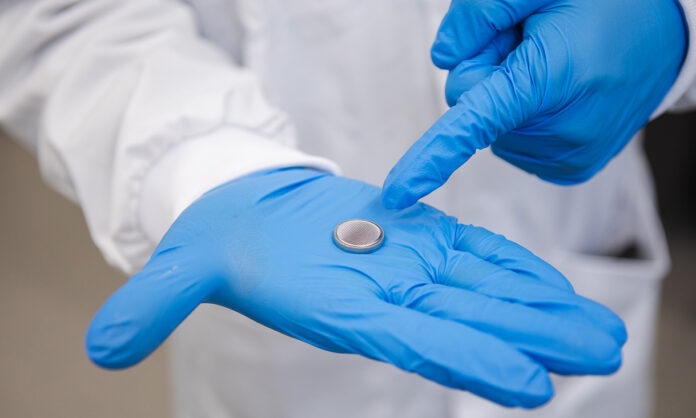RMIT University in Melbourne, Australia, is the home of a battery research project seeking a safer, recyclable alternative to Lithium-Ion (Li-ion) for large-scale energy storage. Their work has led to an aqueous metal-ion battery that uses water for its electrolyte. The battery design calls for readily available, inexpensive materials and allows for disassembly and reuse of its components.
Aqueous energy storage devices replace the organic electrolytes in Li-ion with water to enable the electric current to pass between the positive and negative terminals. A battery based on water will not catch on fire. No more exploding laptops or Teslas.
Manufacturing of the battery is also simpler. The component materials are abundant, inexpensive and less toxic than any other battery currently in development or commercially available today. Materials include zinc, magnesium and bismuth. The latter coats the battery parts to stop dendrites from forming over time, a common problem for Li-ion.
The main drawback at present is lower energy density than current Tesla battery packs. The best performance to date only achieves 30% of the energy density of its Li-ion competitor. The RMIT team is developing new nanomaterials for the electrodes to improve energy density.
I have written about the development of sodium-ion (Na-ion) batteries that in the beginning produced lower energy-density levels than Li-ion. But Na-ion batteries are now found in electric vehicles and energy-density levels are improving. I suspect that aqueous batteries should see a similar trajectory.
Professor Tianyi Ma the lead researcher at RMIT’s School of Science, appears to believe that the batteries the university is developing will follow the Na-ion path. He recently stated in a news release, “Magnesium-ion water batteries have the potential to replace lead-acid battery in the short term, like one to three years, and to replace potentially lithium-ion battery in the long term, 5 to 10 years from now. Magnesium is lighter than the alternative metals, including zinc and nickel, has a greater potential energy density and will enable batteries with faster charging times and better capability to support power-hungry devices and applications.”
Professor Ma believes the batteries RMIT is developing will be suitable for large-scale use such as for storage backup in renewable wind and solar projects and for standalone storage to feed to the grid during peak energy demand. Eventually, the smaller-scale versions will power cars, homes and handheld devices.
The latest research was recently described in an article published in the journal, Advanced Materials. In it, the rechargeable aqueous batteries are described as “a promising candidate” to replace Li-ion not just because of their safety and low toxicity, but also because they have a huge upside in terms of price and theoretical energy storage capacity.
The University is partnering with Sydney, Australia-based GrapheneX to commercialize the research. RMIT and GrapheneX are collaborating on developing graphene-based supercapacitors for use in high-power, energy storage applications. Supercapacitors provide rapid energy release in seconds. The two are also working on a transformative carbon dioxide recycling project that uses a modular CO2 electrolyzer to convert waste carbon captured from industrial emissions into renewable methanol fuel.
It looks like the folks Down Under have a good thing going in the race to decarbonize the planet. The aqueous or “water” battery could prove to be a game-changer for utilities, transportation, and home power generation. It could even power our handheld devices not too many years from now.
















